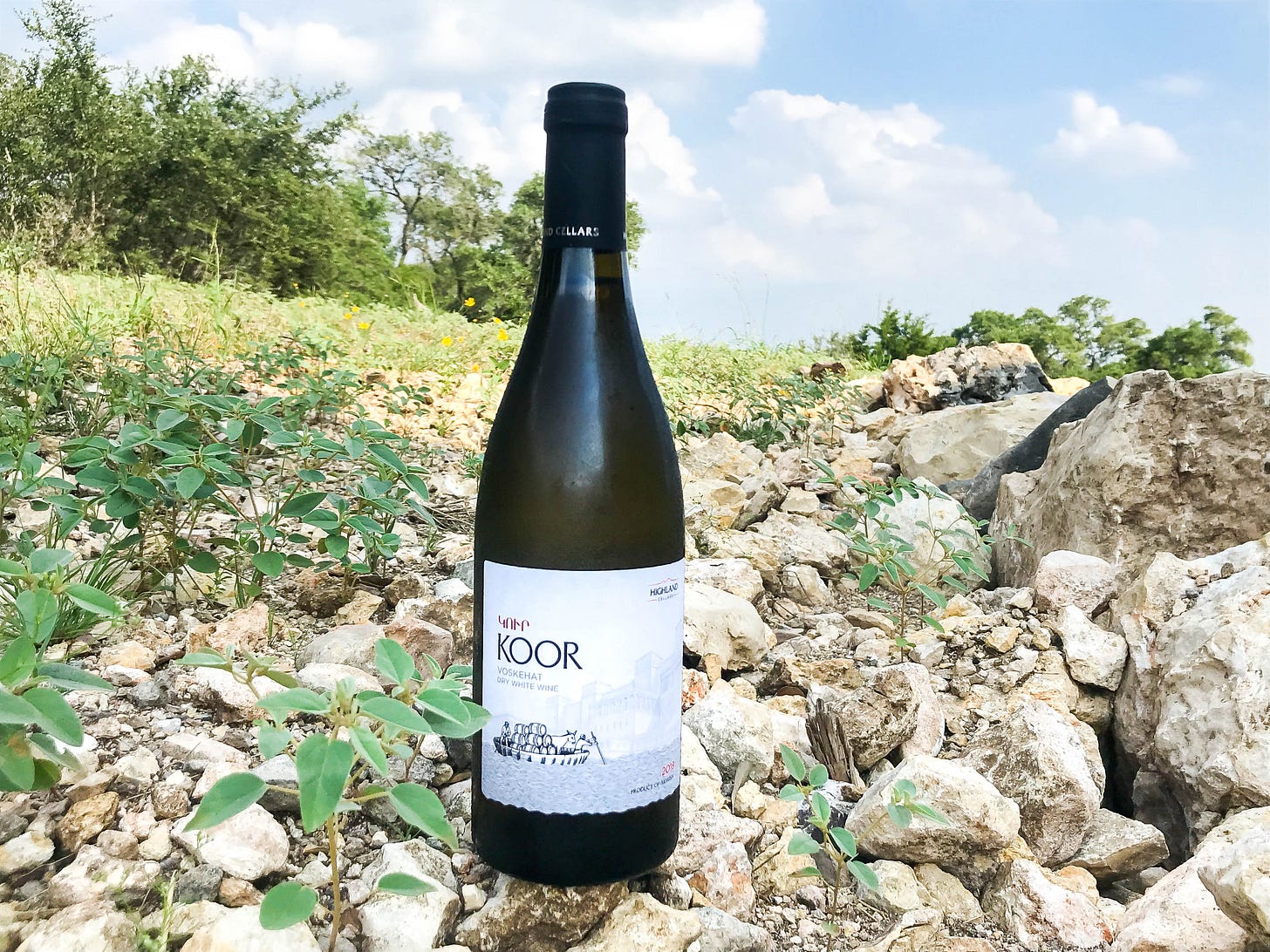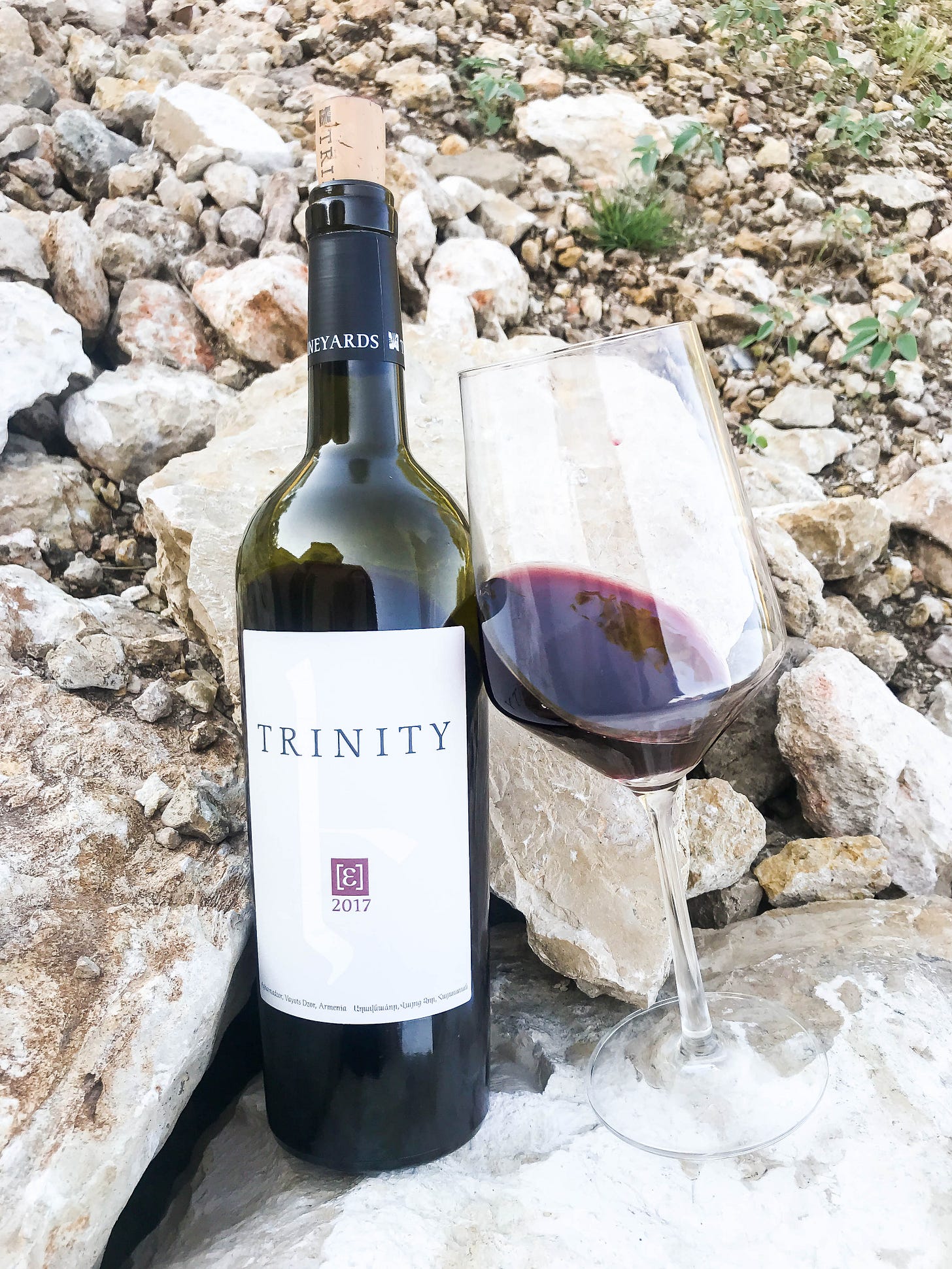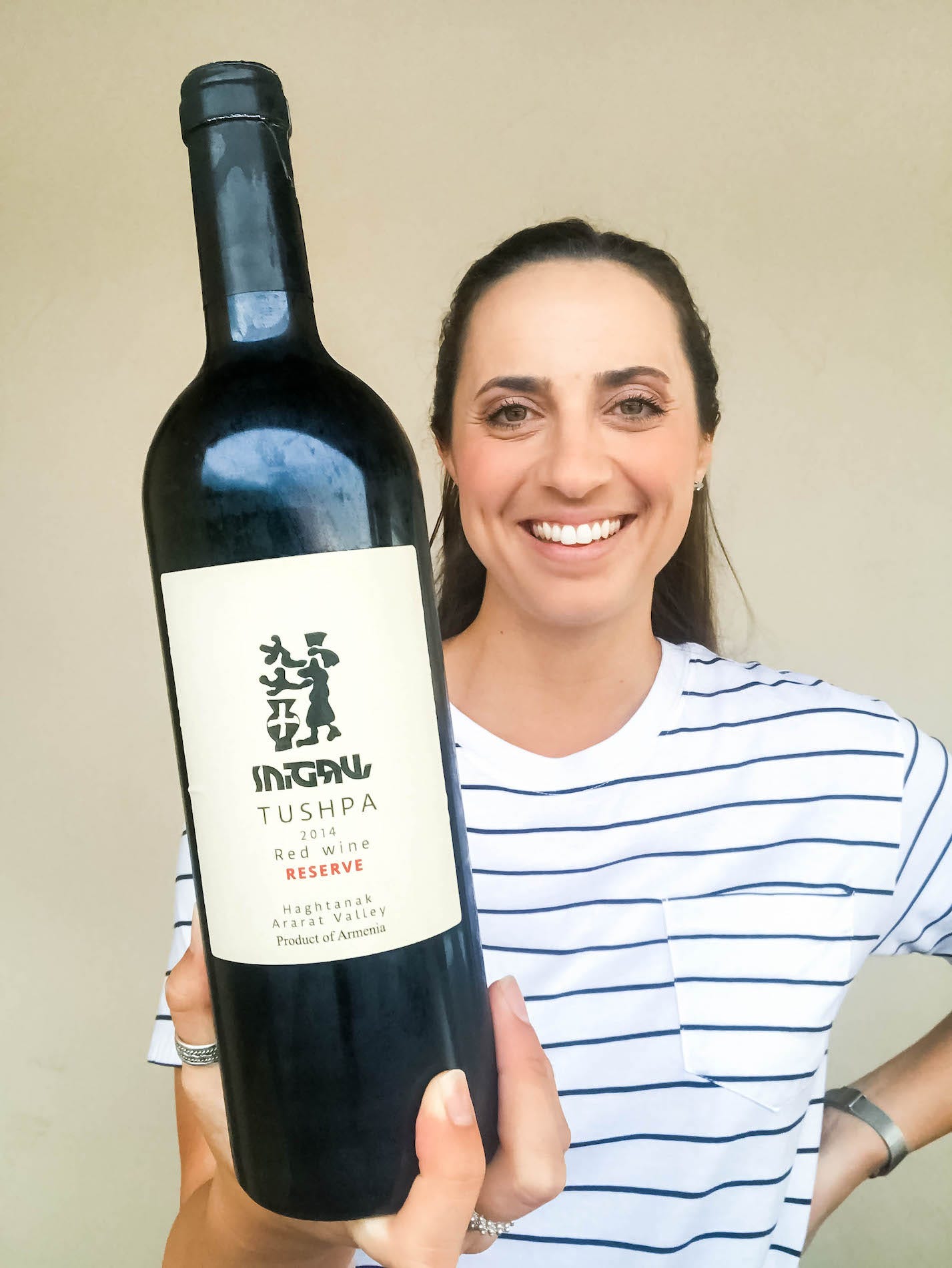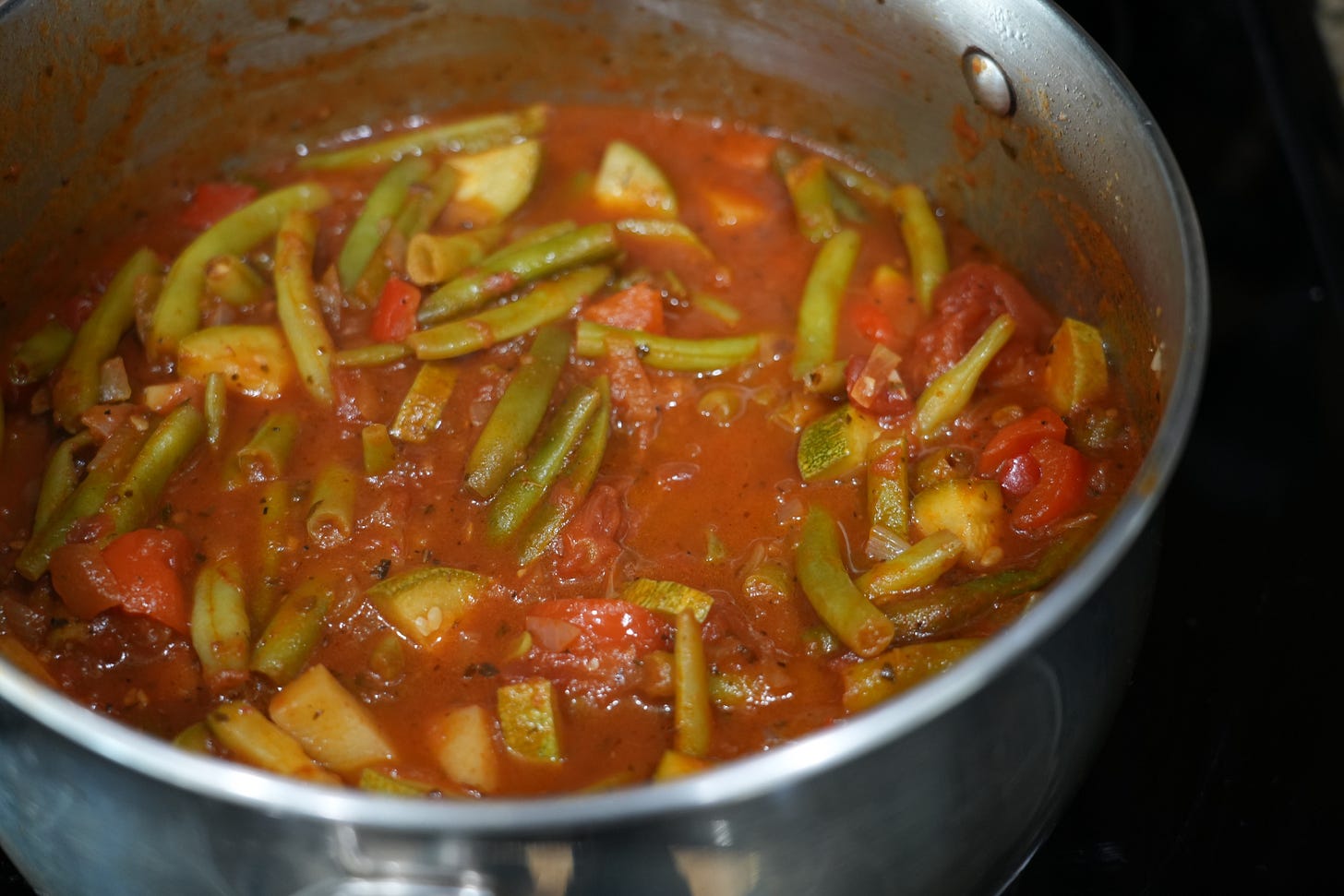Try January: 4 Must Try Armenian Varieties + A Favorite Greek Blue Zone Vegetarian Recipe
Discover Armenian wines, including Kangun, Voskehat, Areni Noir, and Haghtanak, plus the perfect vegetarian pairing - fasolakia.
We’ve kicked Dry January to the curb and are continuing our adventures in wine discovery with a handful of varieties from Armenia that are certainly worth your while…
A Bit About Armenia
Armenia is one of the world’s oldest civilizations, nestled in the Caucasus region. Georgia lies to the north, Azerbaijan to the east, Iran to the south, and Turkey to the west. With the towering Caucasus Mountains shaping its terrain, Armenia boasts microclimates ideal for viticulture.
The country’s rugged landscape averages an elevation of 5,900 feet (1,800 meters), with diverse soils enriched by volcanic residue and a climate ranging from dry subtropical to cold alpine. This unique geography creates the perfect foundation for producing distinctive wines.
Armenia’s history is as complex as its terrain. It has faced centuries of occupation by the Ottomans, Persians, and later, the Soviet Union, which prioritized quantity over quality in wine production. Despite these challenges, Armenia’s wine industry has reemerged, focusing on quality and reclaiming its place on the global wine stage.
Perhaps what makes Armenian wine even more remarkable is its resilience. Winemakers have persevered through hardship, transforming the industry into a symbol of national pride. Today, the fantastic Armenian wines explored below are a testament to that journey.
A Unique Armenian Wine Discovery
Armenia’s connection to wine dates back over 6,000 years. The Areni-1 Cave Complex in southern Armenia revealed the world’s oldest known wine production site. Ancient wine presses, jars, and charred grape seeds found here point to a thriving wine culture intertwined with spiritual rituals. This discovery solidifies Armenia’s role as a birthplace of winemaking.
Kangun – An Elegant White Armenian Variety
The Vine & Wine Foundation of Armenia is an incredible resource for exploring Armenian wine, and it’s where I found most of the information on this unique variety, Kangun.
Kangun is one of Armenia’s most abundant native grapes. According to Jancis Robinson, it’s a hybrid of Bukholimansky Bely and Rkatsiteli. This versatile variety is used for still and sparkling wines, though much of it is dedicated to Armenian Cognac production. Kangun wines typically feature light straw hues with aromas and flavors of white fruits, wildflowers, honey, and quince.
Tushpa and the Ararat Valley
“You’ve tasted the Old and New World. Now say hello to Ancient World Wines.”
— Tushpa
This quote from Tushpa’s website perfectly encapsulates the spirit of Armenian winemaking. Like many Armenian producers, Tushpa celebrates the country’s ancient traditions and indigenous grapes, which predate even the most storied Old World regions.
Tushpa is located in the Ararat Valley, one of the world’s oldest winemaking terroirs. This region is Armenia’s second-largest viticultural area, with 4,713 hectares (11,646 acres) under vine. It is also one of Armenia’s sunniest and warmest areas, with vine-growing roots stretching back to 685–645 B.C.
The winery’s founder, Mihran Manasserian, studied enology at the Armenian National Agrarian University and produced wines for Soviet-era wineries. After the Soviet Union’s collapse, Mihran finally realized his dream of starting his own winery. In 1992, he purchased land and built Tushpa from the ground up—a journey that embodies the resilience and passion of Armenian winemaking.
Tasting Notes: Tushpa, Kangun 2018
Color: Brilliant, delicate pale straw yellow
Aromas: Medium intensity with honeysuckle, jasmine, apricot, quince, and citrus notes like tangerine and Meyer lemon
Palate: Medium-bodied, dry, with vibrant medium-plus acidity; flavors of sweet apricot, quince, and blossom; a long, luxurious finish with lingering fruits and florals
Pairing Suggestions
Kangun’s elegance and bright acidity make it a fantastic match for fresh, flavorful dishes. Here are some pairing ideas:
Citrus Salad: With fennel and avocado
Fresh Octopus Salad
Greek Dolmades: Served with dill-packed tzatziki
Braised Chicken: With lemon and olives
Seafood: Citrus-glazed halibut or roasted sea bass stuffed with fennel, citrus, garlic, and shallots
Vegetarian Delights: Herb, goat cheese, and orzo-stuffed peppers
Grilled Peach Salad: With basil, burrata, and prosciutto
Voskehat - A Complex White Armenian Wine
Voskehat, an autochthonous Armenian variety, translates to “golden berry”, a name that reflects its late-ripening nature and extended exposure to the sun. This variety is cultivated across Armenia but is most prominent in Ashtarak, Ejmiatsin, and Armavir.
Voskehat is a vintage-driven variety, showcasing a diverse range of aromatic profiles depending on the growing conditions of each year. For instance:
2013 - a cold year, produced Voskehat wines with pronounced stone fruit flavors like peach and apricot.
2014 - a warm year, brought out tropical notes such as banana, pineapple, and mango.
Wines made from Voskehat are typically crisp, aromatic, and elegant, offering notes of white fruits, citrus, and wildflowers. Winemakers value this variety for its versatility and its potential, which is only just beginning to be fully explored.
KOOR by Highland Cellars
In Armenian, “koor” or “kur” translates to “bent”, a nod to the traditional leather-wrapped boats that carried barrels of wine down the Euphrates and Tigris rivers to Babylon. These boats were crafted with bent wood, a feature that Highland Cellars commemorates through their KOOR brand.
Highland Cellars embraces the revival of Armenian wine culture while preserving ancient winemaking traditions. They produce KOOR wines at WineWorks, an urban winery in Yerevan that has been at the forefront of Armenia’s wine renaissance.
Highland Cellars, KOOR Voskehat 2018
This wine exemplifies the elegance and complexity of Voskehat:
Tasting Notes
Color: Beautiful, brilliant pale-yellow with green reflections.
Aromas: Medium-pronounced and perfumed, with notes of wild white flowers, lemon verbena, jasmine, juicy pear, white grapefruit, and a touch of crisp green freshness.
Palate: Dry, with medium-minus body and refreshing medium acidity. Flavors of juicy pear, pineapple, and white grapefruit unfold to a lustrous, elegant finish.
A truly unique wine that captivates your senses with its symphony of aromas and balanced palate.
Pairing Suggestions
A Voskehat with characteristics similar to KOOR Voskehat 2018 pairs beautifully with herb-marinated goat cheese and crostini. Other excellent pairings include:
Niçoise salad with seared fresh tuna
White bean and tuna salad with basil vinaigrette
Cod baked in parchment paper with leek and orange couscous
Mussels steamed in white wine, with leeks and parsley
Pappardelle pasta with crab, snap peas, basil, and lemon zest
Areni Noir – Armenia’s Most Treasured Variety
Areni Noir, also known as Sev Areni in Armenia, is one of the country’s most prized grape varieties. It thrives across all Armenian wine regions, but its heart lies in Vayots Dzor, southeastern Armenia. The village of Areni, home to the historic Areni-1 Cave Complex, lends its name to this variety, and the region boasts Areni Noir vines over 120 years old.
This variety is characterized by thick-skinned, large berries with compact clusters. Its resistance to disease and adaptability to the extreme conditions of Vayots Dzor make it a vineyard workhorse. Yet in the glass, Areni Noir is graceful and complex. Young wines are typically deep in color, with bright acidity and freshness. Oak aging, often in Caucasian oak from the nearby mountains, enhances the wine’s texture, introducing velvety notes of blackberry, cherry, and black olive.
Vayots Dzor – The Region
Vayots Dzor is often referred to as the jewel of Armenian winemaking, thanks to its proximity to the Areni-1 Cave Complex. This region not only produces Areni Noir but also other native varieties like Voskehat, Tozot, and Khatoun Kharji.
Vayots Dzor’s vineyards sit at elevations between 1,000 and 1,700 meters above sea level, benefiting from light brown soils, abundant sunshine, and an average annual rainfall of 319 mm. The region has 1,200 hectares of vineyards, divided between its two sub-regions: Areni and Aghavnadzor.
Areni Sub-region: Elevation of 950–1,200 meters.
Aghavnadzor Sub-region: Elevation of 1,000–1,650 meters, volcanic soils with sand and gravel, and an impressive 250 sunny days per year. This area produces the most Areni Noir, with 400 hectares of vineyards, including those of Trinity Canyon Vineyards.
Trinity Canyon Vineyards
Founded in 2009 by three passionate wine enthusiasts, Trinity Canyon Vineyards is nestled in Vayots Dzor. With guidance from expert winemakers and viticulturists, they created a winery that honors Armenia’s ancient winemaking legacy.
Trinity Canyon Vineyards, Areni Noir 2017
This wine is made from 100% Areni Noir grapes. After destemming and crushing, 15% of the juice was bled off before fermentation to enhance concentration. An extended post-fermentation maceration extracted additional phenolic compounds. The wine was then aged for 18 months in Caucasian oak barrels.
Tasting Notes
Color: Bright ruby, medium-minus intensity
Aromas: Medium-pronounced with brambly blackberry, stewed cherries, earthy spices, black pepper, cocoa powder, vanilla, and caramel
Palate: Medium-bodied, medium acidity, and medium tannins with notable astringency. The dry palate features concentrated black fruits and finishes with lingering dusty cocoa and earthy flavors.
Haghtanak – A Lusciously Expressive Armenian Red Wine for Any Occasion
Haghtanak, a native Armenian grape, belongs to a rare group of teinturier varieties, meaning both its juice and pulp are red. Other well-known teinturier grapes include Alicante Bouchet, Chambourcin, and Saperavi. Given Armenia’s proximity to Georgia and the shared teinturier characteristic, it’s no surprise that Haghtanak is likely a Soviet-era crossing of Saperavi and other Armenian varieties.
Primarily grown in the Ararat Valley, the name Haghtanak translates to “victory” in Armenian. This is a late-ripening variety, known for its ability to achieve high sugar content. Haghtanak is often used in blends for its rich color, though it also produces age-worthy, single-varietal wines.
Haghtanak wines are defined by their rich tannin structure and intense flavors of dark black fruits like black cherry, blackberry, and blackcurrant. Wines made from Haghtanak are typically aged in Caucasian oak, which adds aromas of vanilla and clove, while the variety itself can express notes of coffee, cocoa, and pepper.
Tushpa, Haghtanak Reserve 2014
Tushpa’s Haghtanak Reserve 2014 was crafted from grapes grown in the Ararat Valley and aged for 14 months in Caucasian oak barrels.
Tasting Notes
Color: Stunning, deep crimson red.
Aromas: Intensely perfumed with notes of black cherry, blackcurrant, clove, vanilla, tobacco, and a slight floral hint. Oak influence is present but elegantly integrated.
Palate: Medium-plus body, medium-plus acidity, and medium-plus tannin. Juicy black fruit flavors dominate, followed by lingering notes of vanilla and clove. The wine has a luxurious mouthfeel with an elegant, persistent finish.
Fasolakia: One of My Favorite Greek Recipes My Mom Used to Make
I don’t know about you, but after the indulgent holiday season I have been craving vegetables nonstop. Fasolakia is a comforting yet healthy dish that’s mainly Greek green beans in tomato sauce. Growing up, it’s a recipe my mom always made and I’ve recreated it here so we can all enjoy it as we’re making healthier choices in January and the year ahead. Fasolakia would make a great pairing for either of these Armenian reds or the Greek red wines featured in last week’s newsletter.
Ingredients
Olive oil (approx. 3 tbsp)
1.5 lbs of green beans, ends trimmed and cut in half (option to use frozen beans if preferred)
1 large yellow onion, finely chopped
2 garlic cloves, finely chopped
2 yukon or red potatoes, peeled and diced
1 red bell pepper, diced
2 small zucchini (or 1 large) diced
1 28-oz can of crushed tomatoes or tomato sauce
2 tsp dried oregano
1 tsp dried dill
salt , pepper, red pepper flakes to taste
1 tsp of sugar
1 cup of water
Feta cheese
Instructions
Heat 2-3 tsp of olive oil in a large pot over medium heat. Add a pinch of red pepper flakes to the oil while it’s heating up for a bit of spice. Heat for 1-2 minutes.
Add the onions and garlic. Season with a pinch of salt, pepper, and 1 tsp of oregano. Sauté until the onions are translucent, stirring occasionally to avoid burning, and cover the pot in between stirring to help the onions cook through.
Add the green beans with another drizzle of olive oil and pinch of salt and pepper. Sauté the green beans, stirring occasionally. Again, cover the pot in between stirring to help them cook through for around 5 minutes.
Add the red bell pepper, sautéing with the green beans for 3-5 minutes.
Add the potatoes and zucchini. Season with a bit more salt and pepper, plus the remaining oregano and dried dill. Add the crushed tomatoes or tomato sauce, 1 cup of water, and a pinch of sugar. Stir to combine and cover the pot.
If you’re using only tomato sauce, you can add a bit less water.
I sometimes use a combination of canned whole tomatoes and tomato sauce because I like having some pieces of tomato.
Bring to a boil, stirring occasionally, then reduce to low heat and allow the covered pot to simmer for 35-45 minutes, stirring occasionally. The fasolakia is ready when the potatoes are cooked through.
Serve with crumbled feta on top.
Fasolakia is especially delicious served with warm pita bread to soak up the sauce. Alternatively, you could serve it over rice for a complete vegetarian meal.







